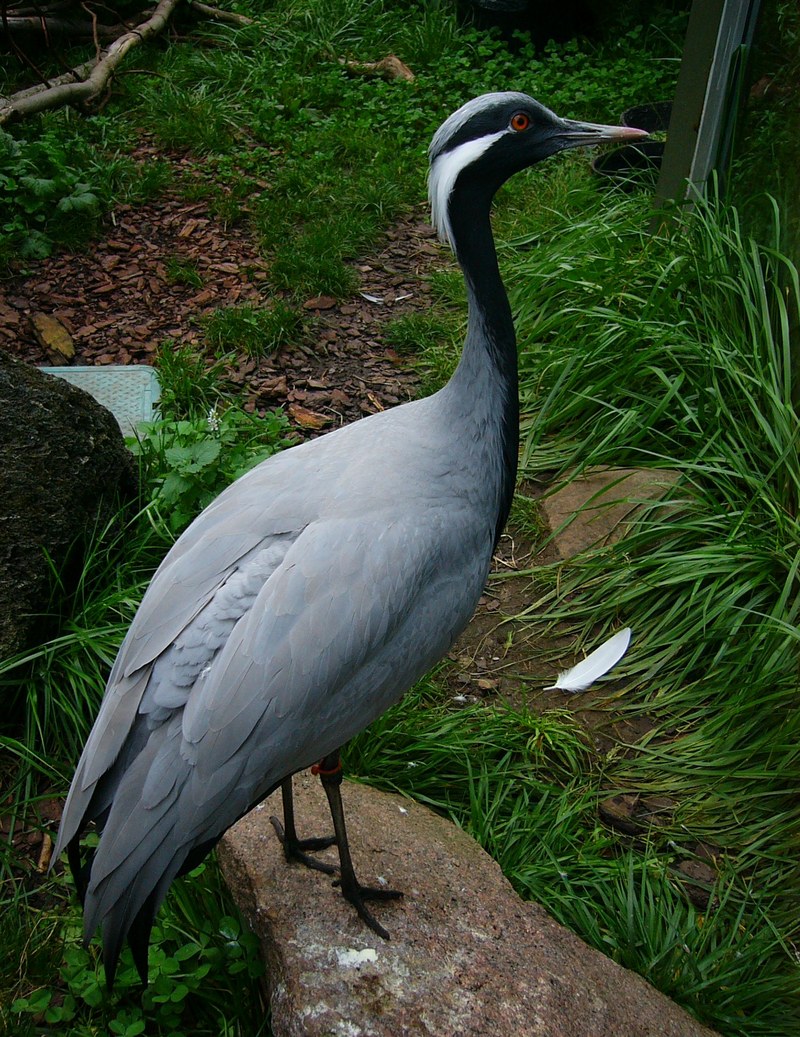ERROR : Server Busy(-1105)
ERROR : Server Busy(-1105)
Demoiselle Crane (Anthropoides virgo) - Wiki
Demoiselle Crane
From Wikipedia, the free encyclopedia
[Photo] Demoiselle Crane (Anthropoides virgo) in Toronto Zoo. Photographed by User:Menchi.
The Demoiselle Crane, Anthropoides virgo is a species of crane. It breeds in central Asia, with a few found in Cyprus and eastern Turkey, even far as western and Northern Pakistan and migrates to Africa and South Asia in winter.
The Demoiselle is 85-100 cm long with a 155-180 cm wingspan. It is therefore slightly smaller than the Common Crane, with similar plumage. However it has a long white neck stripe and the black on the foreneck extends down over the chest in a plume.
It has a loud trumpeting call, higher-pitched than the Common Crane. Like other cranes it has a dancing display, more balletic than the Common Crane, with less leaping.
During the breeding season, marshy areas are preferred living spaces, while the cranes are more commonly found in dry grasslands throughout the winter. The birds usually nest no more than 500 m away from a main source of water. Damp marshes, steppe habitats, and meadows are all other areas in which the Demoiselle Crane could be spotted in. The range in height goes from sea level to over 10,000 metres.
Demoiselle cranes have to take one of the toughest migrations in the world. In late August through September, they gather in flocks of up to 400 individuals and prepare for their flight to their winter range. During their migratory flight south, Demoiselles fly like all cranes, with their head and neck straight forward and their feet and legs straight behind, reaching altitudes of 16,000-26,000 feet (4,875-7,925 m). Along their arduous journey they have to cross the Himalayan mountains to get to their over wintering grounds in India, many die from fatigue, hunger and predation from birds such as eagles. At their wintering grounds, Demoiselles have been observed flocking with Common Cranes, their combined totals reaching up to 20,000 individuals. Demoiselles maintain separate social groups within the larger flock. In March and April, they begin their long spring journey back to their northern nesting grounds.
In Khichan in India, villagers feed the Cranes on their migration and these large congregations have become an annual spectacle.
The Demoiselle Crane is evaluated as Least Concern on the IUCN Red List of Threatened Species. It is one of the species to which the Agreement on the Conservation of African-Eurasian Migratory Waterbirds (AEWA) applies.
http://en.wikipedia.org/wiki/Demoiselle_Crane
| The text in this page is based on the copyrighted Wikipedia article shown in above URL. It is used under the GNU Free Documentation License. You may redistribute it, verbatim or modified, providing that you comply with the terms of the GFDL. |
|

